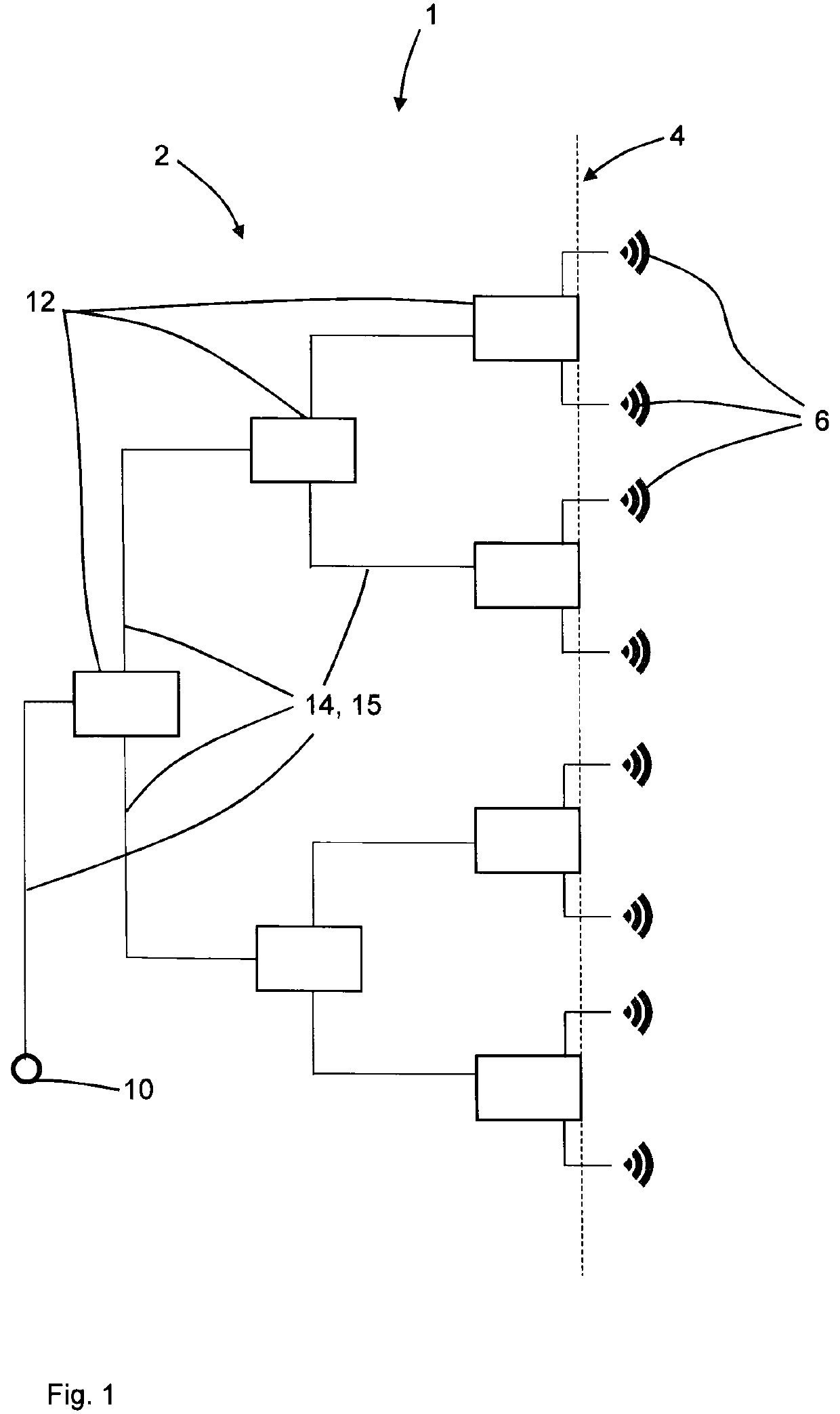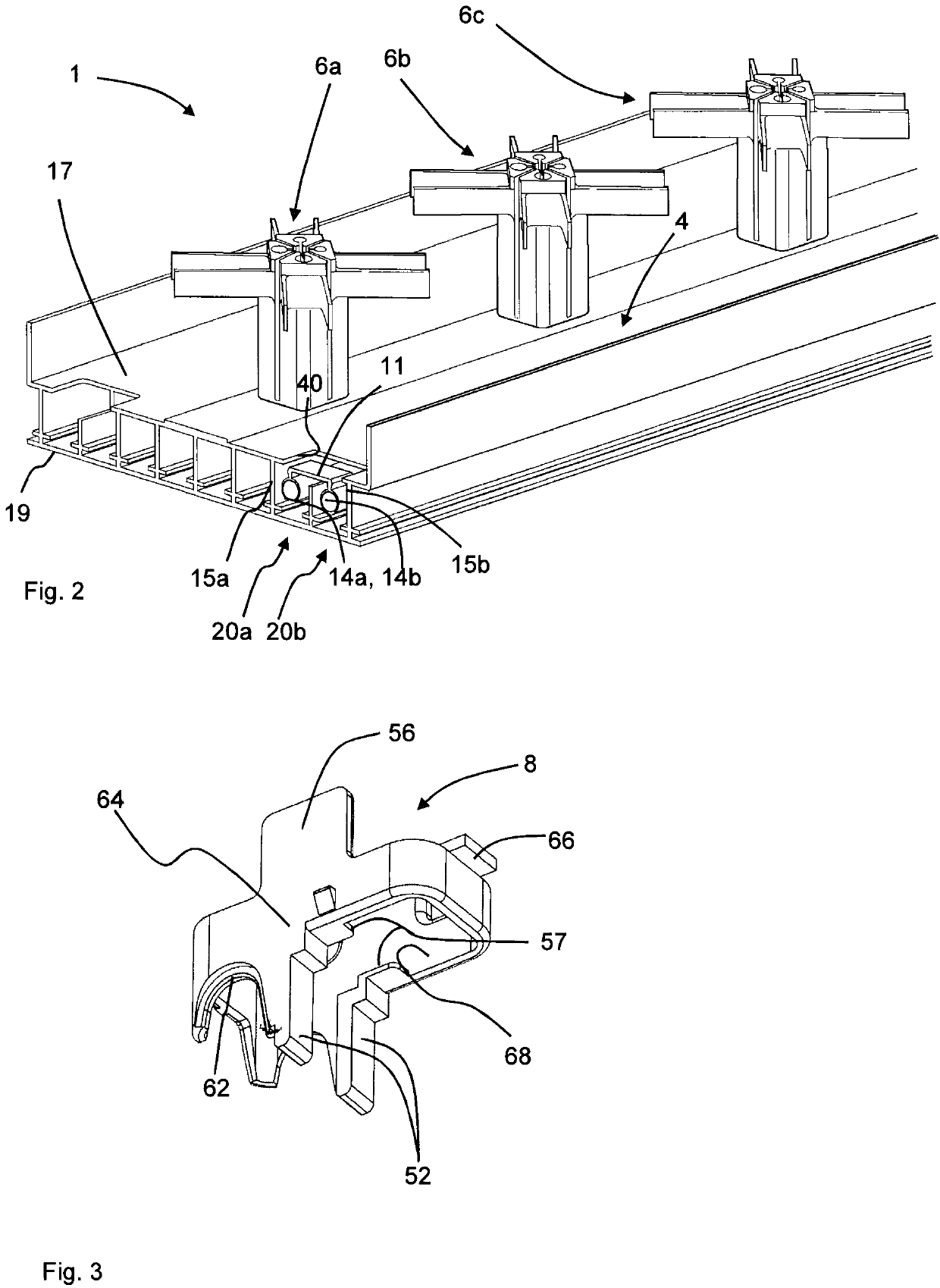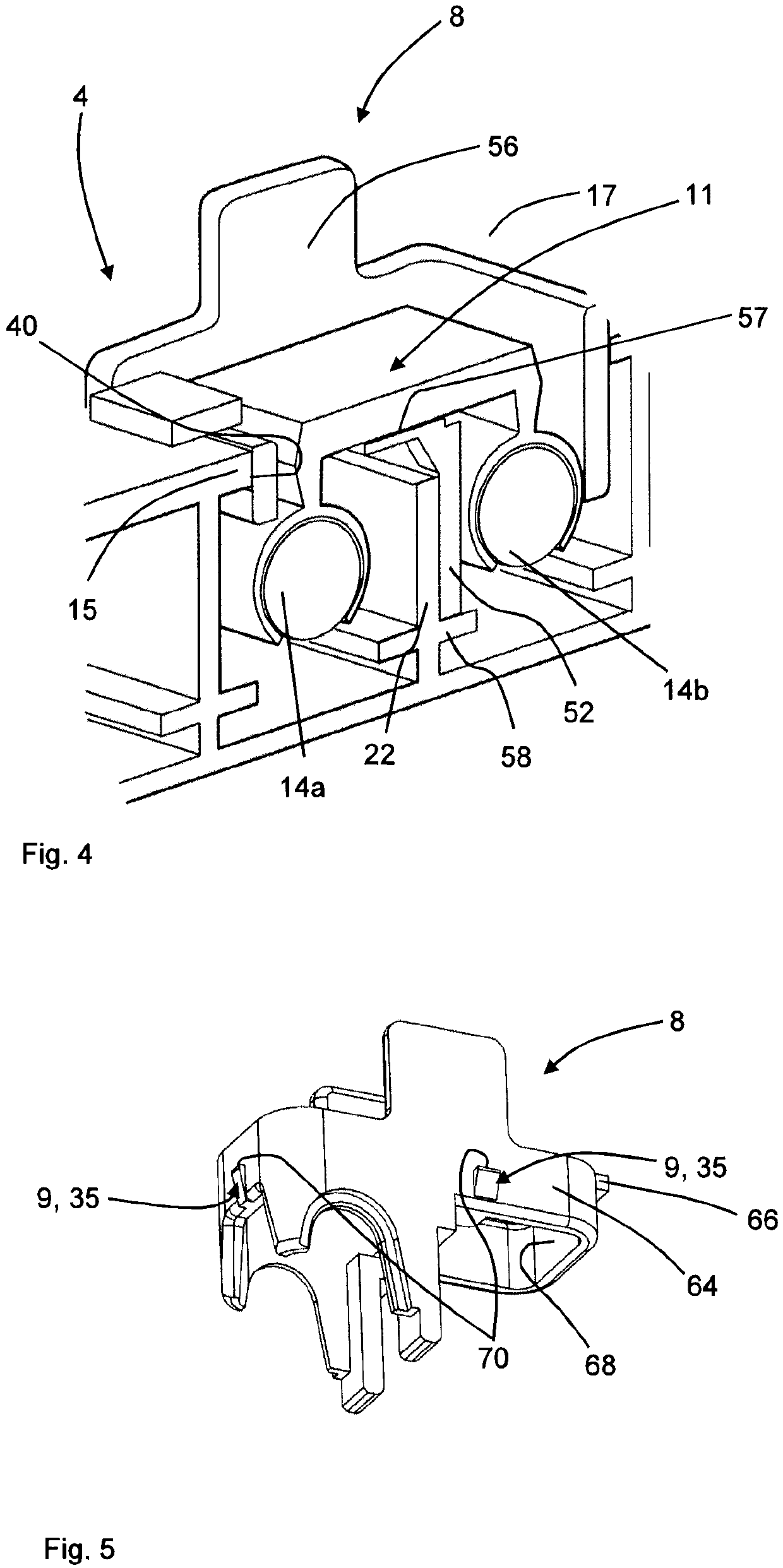Antenna feeding network comprising at least one holding element
a technology of holding elements and feeding networks, applied in the direction of polarised antenna unit combinations, coupling device connections, waveguides, etc., can solve the problems of reducing mechanical stability, unwanted radiation from feeding networks, reducing antenna performance in terms, etc., and achieves the effect of increasing permittivity and phase shi
- Summary
- Abstract
- Description
- Claims
- Application Information
AI Technical Summary
Benefits of technology
Problems solved by technology
Method used
Image
Examples
Embodiment Construction
[0039]FIG. 1 schematically illustrates an antenna arrangement 1 comprising an antenna feeding network 2, an electrically conductive reflector 4, which is shown schematically in FIG. 1, and a plurality of radiating elements 6. The radiating elements 6 may be dipoles.
[0040]The antenna feeding network 2 connects a coaxial connector 10 to the plurality of radiating elements 6 via a plurality of lines 14, 15, which may be coaxial lines, which are schematically illustrated in FIG. 1. The signal to / from the connector 10 is split / combined using, in this example, three stages of splitters / combiners 12.
[0041]Turning now to FIG. 2, which illustrates a multi-radiator antenna 1 in a perspective view, the antenna 1 comprises the electrically conductive reflector 4 and radiating elements 6a-c.
[0042]The electrically conductive reflector 4 comprises a front side 17, where the radiating elements 6a-c are mounted and a back side 19.
[0043]FIG. 2 shows a first coaxial line 20a which comprises a first c...
PUM
 Login to View More
Login to View More Abstract
Description
Claims
Application Information
 Login to View More
Login to View More - R&D
- Intellectual Property
- Life Sciences
- Materials
- Tech Scout
- Unparalleled Data Quality
- Higher Quality Content
- 60% Fewer Hallucinations
Browse by: Latest US Patents, China's latest patents, Technical Efficacy Thesaurus, Application Domain, Technology Topic, Popular Technical Reports.
© 2025 PatSnap. All rights reserved.Legal|Privacy policy|Modern Slavery Act Transparency Statement|Sitemap|About US| Contact US: help@patsnap.com



